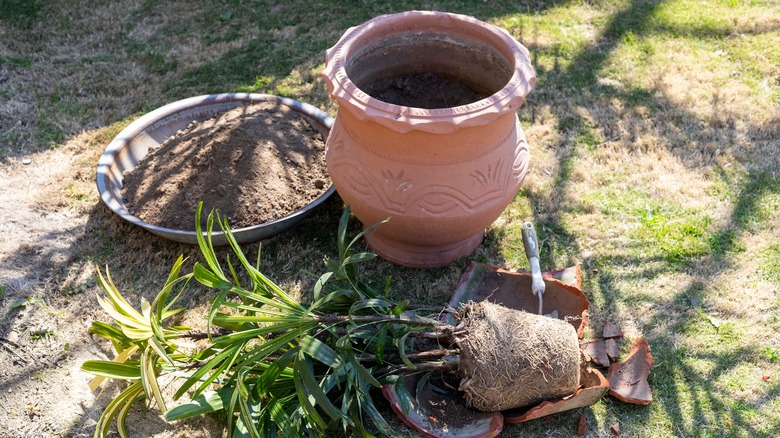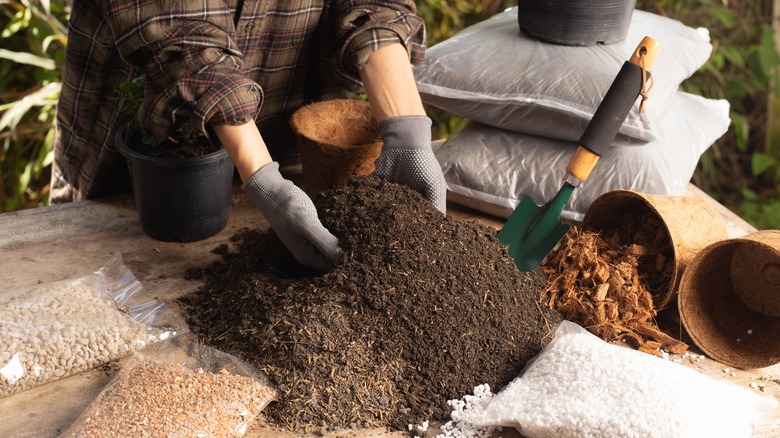Should You Use Pieces Of Broken Flower Pots As Drainage Material For Planters?
Watching our plants thrive can be rewarding, but getting to that point requires patience and a bit of trial and error. Although some basics — like giving your plant the sunlight and water that it needs — are nonnegotiable, other tips are questionable. One piece of advice that gets floated around involves layering the bottom of your planter boxes or pots with broken terracotta pots to increase drainage, which is similar to this common plant pot drainage "hack" you should avoid doing.
At first glance, this makes sense. Terracotta is porous and takes in moisture from the soil. However, Linda Chalker-Scott, an extension horticulturist and associate professor at Washington State University, busts this myth. She explained that studies have found that water does not flow easily from layers of fine materials — like soil — to layers of coarse materials, like rocks or pieces of broken pots. In other words, "drainage material added to containers will only hinder water movement," Chalker-Scott writes, which is the opposite of what gardeners intend.
Pot shards can also clog the drainage holes of your pot or planter box, making your plant susceptible to root rot. Without proper drainage, the soil also may become too compacted, which impacts the roots' abilities to grow and take in enough oxygen. So the next time one of your pots breaks, consider one of these smart fixes to save your broken terracotta pot — and skip putting the shards in your planters.
Amend the soil for improved drainage
So, what can you do if you're having issues with soil drainage and need ideas to improve it? For starters, focus on the quality of your potting soil. If your plants call for well-drained soil, amend the dirt with something coarse that will improve the makeup of your soil and increase aeration. Thoroughly blend materials like perlite, finely shredded pine bark, coconut fiber, or pumice into the soil — don't layer them at the bottom of the planter. Each of these materials has its own benefits, so consider your plant's needs when deciding which to mix into the potting soil.
Also, if your planter does not have a drainage hole, you can either drill one or keep your plant in a plastic nursery grow pot, which does have a drainage hole. This can sit inside a more aesthetically pleasing planter. When watering, remove the grow pot and let the water run through the soil before returning the pot to its planter. If figuring out your plant's ideal drainage needs is intimidating, opt for these 20 easy-to-grow houseplants that don't need drainage.

